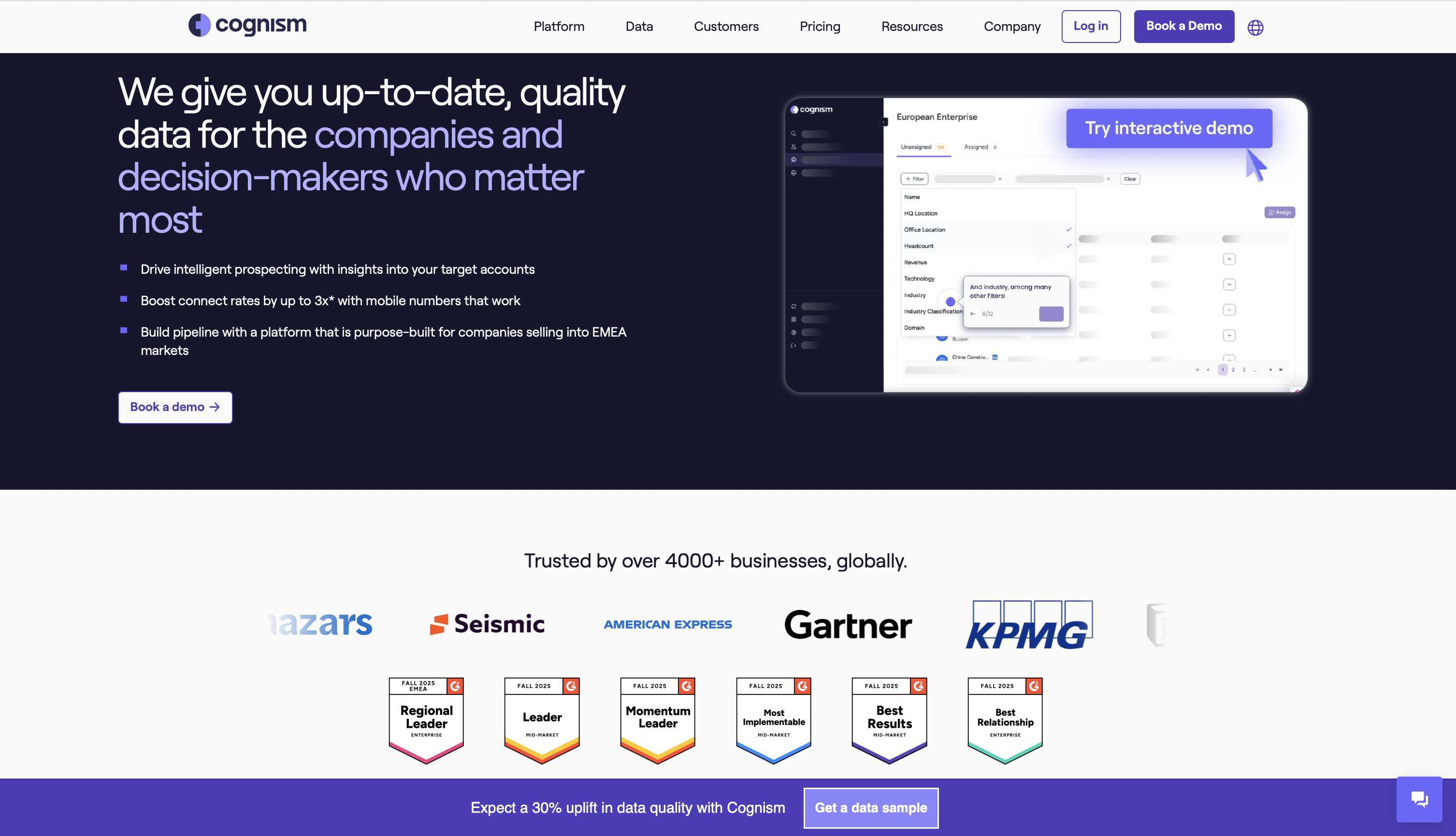
Cognism places differentiation second on its homepage, before explaining product capabilities. This targets buyers already comparing vendors. It works because buyers in mature categories don’t need education. They need to understand why Cognism is better than ZoomInfo, Apollo, or Lusha. This approach works only when you have defensible, specific differentiators that address tangible buyer problems, not generic competitive claims.
Cognism was co-founded in 2015 by James Isilay and Stjepan Buljat. With its first office in Skopje, Macedonia, Cognism grew to 500 employee and become a reference as a sales intelligence platform.
Cognism leads with differentiation before explaining capabilities. Right after the hero section, you’ll find an explanation of “Why Cognism data is different.” This homepage decision tells me that Cognism is speaking to buyers already comparing vendors, not prospects learning about the category.

The differentiation section includes 3 detailed competitive claims:
What’s striking is how Cognism formulates these differentiators. Each is presented in a concise, modular block, almost like a mini value proposition. Every sentence can stand alone, but together they build a layered, reinforcing message. The structure is deliberate:
This approach means buyers can skim any section and instantly understand not just what makes Cognism different but how and why, without wading through generic feature lists or fluff.
My reading is that Cognism is betting on buyers who already understand the category. They don’t ask, “What B2B contact data solutions are out there?” They ask, “Why choose Cognism over ZoomInfo, Apollo, or Lusha?”
By frontloading differentiation, Cognism addresses the actual buyer question immediately. If you’re comparing vendors, you don’t need an explanation of what contact data platforms do. You need to understand how this one differs from the competitors you’re already evaluating.
The prominent placement (second section on the homepage) signals confidence. Cognism isn’t hiding differentiation in a “Why Us” or comparison page. They’re saying, “Here’s what makes us different. If these don’t matter to you, we’re probably not the right fit.”
Lead with differentiation when:
